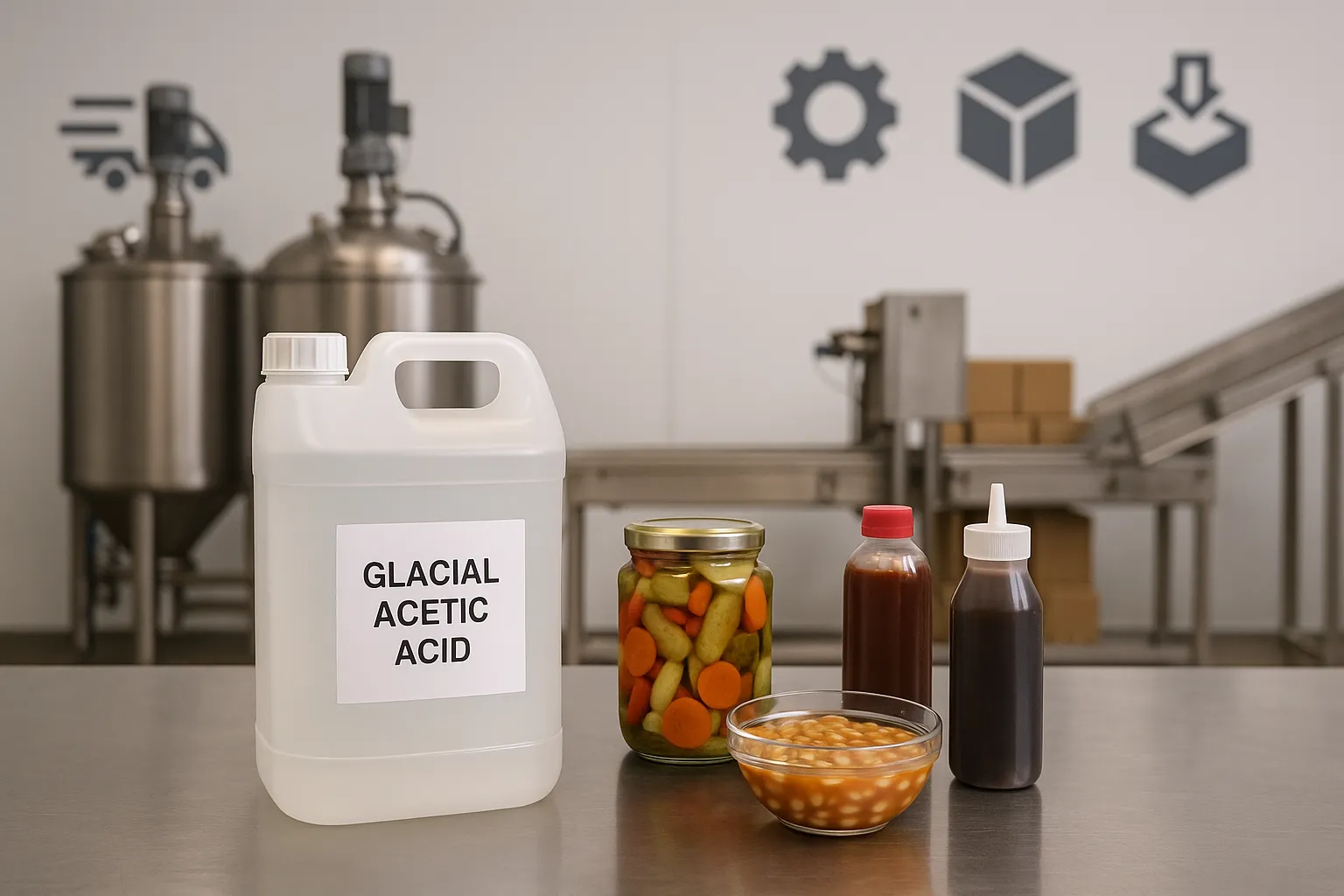Introduction
Glacial acetic acid is a versatile chemical compound used in both food and industrial applications. Its concentration, typically around 99.5% purity, makes it essential for a wide variety of processes — from vinegar production to plastic synthesis. However, not all glacial acetic acid is created equal. Manufacturers must carefully select the appropriate grade depending on its end use.
Understanding the distinction between food-grade and industrial-grade glacial acetic acid is crucial for safety, compliance, and product performance. Improper use of industrial-grade acetic acid in food can lead to health hazards and regulatory penalties.
This article breaks down the different grades of glacial acetic acid, outlines their respective uses, and guides you on how to source the right variant for your needs. For product availability, you can search glacial acetic acid on Food Additives Asia.
What Is Glacial Acetic Acid?
Glacial acetic acid is the anhydrous (water-free) form of acetic acid. It is colorless, corrosive, and has a pungent smell. The "glacial" term comes from its ability to solidify into ice-like crystals at just below room temperature.
In chemical terms, it is a simple carboxylic acid with the formula CH₃COOH. Its high concentration and low water content make it ideal for processes that require exact chemical reactivity. It is widely used across food, chemical, pharmaceutical, and textile industries.
Despite its widespread use, the grade of glacial acetic acid matters tremendously. The purity level and presence of trace elements or heavy metals determine whether it is safe for human consumption or only suitable for industrial processes.
Food Grade Glacial Acetic Acid: Uses and Standards
Food-grade glacial acetic acid is strictly regulated and tested to ensure it is safe for human consumption. It is often used as an acidulant, preservative, or pH regulator in products like vinegar, sauces, pickles, and beverages.
To qualify as food grade, the acetic acid must meet standards such as FCC (Food Chemicals Codex), E260 (EU additive code), and JECFA guidelines. Purity must be ≥99.5% with extremely low levels of heavy metals like arsenic, lead, and mercury. Any deviation from these standards makes the product unfit for food use.
Food processors and manufacturers must ensure that the acetic acid they use comes from certified suppliers. To explore certified suppliers, visit our food-grade product category.
Industrial Grade Glacial Acetic Acid: Characteristics and Applications
Industrial-grade glacial acetic acid is used where food safety is not a concern. Common applications include synthetic fiber production, adhesives, plastics, dyes, and solvents. Its chemical reactivity makes it valuable in acetate ester manufacturing and textile printing.
This grade may contain trace metals or organic impurities not suitable for ingestion. While it often has the same nominal purity (≥99.5%), the testing parameters and tolerance levels differ significantly from food-grade versions.
In industrial environments, this form of acetic acid is valued for its performance rather than safety for consumption. Misuse in food manufacturing could lead to toxic exposure and should be avoided under all circumstances.
Key Differences in Purity and Compliance
While both food and industrial grades may claim 99.5% acetic acid content, the stringency of quality control is what sets them apart. Food-grade acid undergoes rigorous testing for microbiological contamination, heavy metal residues, and additive compliance.
Industrial grades are tested primarily for functionality — not safety. For instance, trace chlorides or iron levels acceptable in industrial settings would be prohibited in food processing due to toxicity risks.
Thus, choosing the right grade is not only about function but also about regulatory compliance. Non-compliance can lead to product recalls, brand damage, and legal consequences.
Choosing the Right Grade for Your Application
If your end product involves ingestion or direct food contact, always choose food-grade glacial acetic acid. This ensures consumer safety and aligns with local and international food regulations.
For industrial users, using food-grade acid may be unnecessary and cost-inefficient. Instead, opt for industrial-grade variants that meet your processing needs without overpaying for food safety compliance.
Still unsure about your grade selection? Contact our technical support for professional assistance tailored to your product goals.
Sourcing Glacial Acetic Acid from Verified Suppliers
The market is saturated with suppliers offering “high-purity” acetic acid, but not all can provide the documentation, certifications, or safety data required for your specific industry.
When sourcing, ensure that your supplier can provide COA (Certificate of Analysis), MSDS, origin documentation, and compliance with food-grade or industrial-grade standards. This is particularly important for exporters and regulated industries.
You can browse and request verified glacial acetic acid products here and filter by grade or region.
Conclusion
Understanding the distinction between food-grade and industrial-grade glacial acetic acid is essential for safe and efficient production. While both grades offer high purity, their intended uses and compliance criteria are vastly different.
Whether you’re a food manufacturer looking for an acidulant or an industrial processor in need of a raw material, selecting the correct grade ensures regulatory alignment, safety, and cost-effectiveness.
To explore your sourcing options or get expert guidance, visit Food Additives Asia's product categories or contact our support team.


Leave a Comment